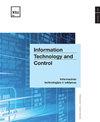Deep Learning for Forgery Face Detection Using Fuzzy Fisher Capsule Dual Graph
IF 2
4区 计算机科学
Q3 AUTOMATION & CONTROL SYSTEMS
引用次数: 2
Abstract
In digital manipulation, creating fake images/videos or swapping face images/videos with another person is done by using a deep learning algorithm is termed deep fake. Fake pornography is a harmful one because of the inclusion of fake content in the hoaxes, fake news, and fraud things in the financial. The Deep Learning technique is an effective tool in the detection of deep fake images or videos. With the advancement of Generative adversarial networks (GAN) in the deep learning techniques, deep fake has become an essential one in the social media platform. This may threaten the public, therefore detection of deep fake images/videos is needed. For detecting the forged images/videos, many research works have been done and those methods are inefficient in the detection of new threats or newly created forgery images or videos, and also consumption time is high. Therefore, this paper focused on the detection of different types of fake images or videos using Fuzzy Fisher face with Capsule dual graph (FFF-CDG). The data set used in this work is FFHQ, 100K-Faces DFFD, VGG-Face2, and Wild Deep fake. The accuracy for FFHQ datasets, the existing and proposed systems obtained the accuracy of 81.5%, 89.32%, 91.35%, and 95.82% respectively.基于模糊Fisher胶囊对偶图的深度学习人脸伪造检测
在数字操作中,使用深度学习算法创建虚假图像/视频或与他人交换人脸图像/视频被称为深度伪造。虚假色情是一种有害的,因为在骗局、假新闻和金融欺诈中包含虚假内容。深度学习技术是检测深度虚假图像或视频的有效工具。随着生成对抗网络(GAN)在深度学习技术中的发展,深度虚假已经成为社交媒体平台中必不可少的一种。这可能会威胁到公众,因此需要检测深度假图像/视频。对于伪造图像/视频的检测,已有大量的研究工作,但这些方法在检测新的威胁或新生成的伪造图像或视频时效率低下,且耗时高。因此,本文主要研究了利用Fuzzy Fisher face with Capsule对偶图(FFF-CDG)对不同类型的假图像或假视频进行检测。本文使用的数据集为FFHQ、100K-Faces DFFD、VGG-Face2和Wild Deep fake。在FFHQ数据集上,现有系统和所提系统的准确率分别为81.5%、89.32%、91.35%和95.82%。
本文章由计算机程序翻译,如有差异,请以英文原文为准。
求助全文
约1分钟内获得全文
求助全文
来源期刊

Information Technology and Control
工程技术-计算机:人工智能
CiteScore
2.70
自引率
9.10%
发文量
36
审稿时长
12 months
期刊介绍:
Periodical journal covers a wide field of computer science and control systems related problems including:
-Software and hardware engineering;
-Management systems engineering;
-Information systems and databases;
-Embedded systems;
-Physical systems modelling and application;
-Computer networks and cloud computing;
-Data visualization;
-Human-computer interface;
-Computer graphics, visual analytics, and multimedia systems.
 求助内容:
求助内容: 应助结果提醒方式:
应助结果提醒方式:


